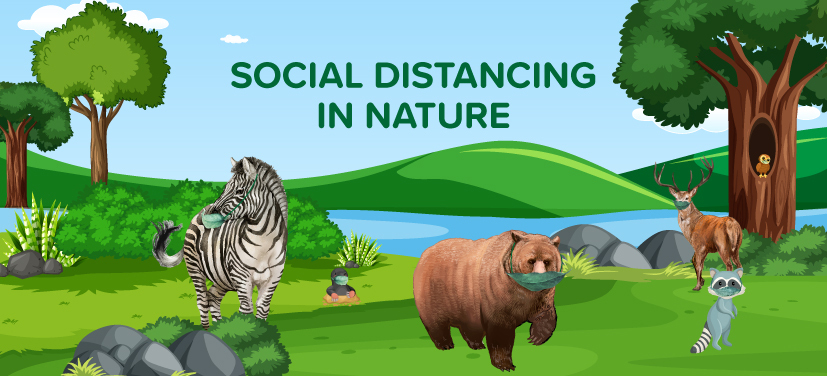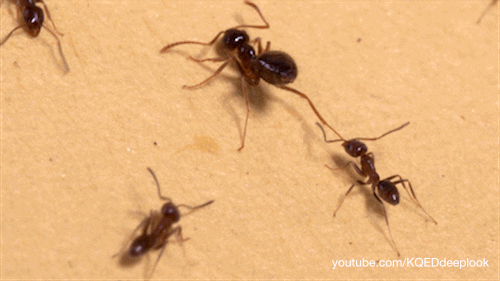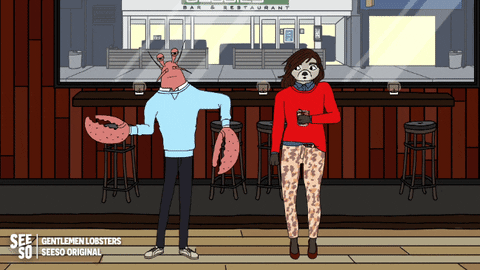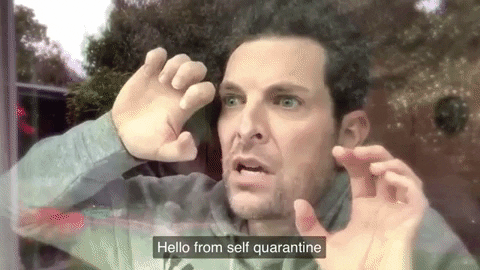
Before the coronavirus pandemic, most of us had never heard of ‘social distancing,’ but in a matter of months, this term become ubiquitous across the globe. Social distancing is the act of maintaining a safe distance from others to slow the spread of a contagious disease.
Now, one might think that social distancing applies only to humans, but lo and behold – the animal kingdom was social distancing long before humans gave it a name!
For most of us, social distancing feels unnatural and strange, but in the animal kingdom, it’s quite common, and in some cases, it is the norm. Just like humans, when an animal contracts a disease in the wild, other individuals (or conspecifics in ecology terms) stay away from the infected individual to protect themselves and limit the disease’s spread.
For many years it was unclear how animals could identify diseased individuals. More importantly, the exact mechanisms that animals used were ambiguous. However, over the last few decades, scientists have learned more and more about animal social distancing.

Credit: GIPHY
Who would have ever thought that even the tiniest of creatures practice social distancing!
Many types of ants live in tight quarters with hundreds or even thousands of close relatives. Much like our day care centers, college dormitories and nursing homes, these colonies can create optimal conditions for spreading contagious diseases.
In response to this risk, ants have evolved the ability to socially distance themselves. When a contagious disease sweeps through their society, both sick and healthy ants rapidly change their behaviours. Sick ants self-isolate and healthy ants reduce their interaction with other ants when there is a disease in the colony.
Healthy ants even “close rank” around the most vulnerable colony members – the queens and nurses – by keeping them isolated from the foragers that are most likely to introduce germs from outside. Overall, these measures are highly effective at limiting disease spread and keeping colony members alive.
Many other types of animals also choose exactly who to socially distance from, and conversely, when to put themselves at risk. For example, mandrills – a type of monkey – continue to care for sick family members even as they actively avoid sick individuals to whom they are not related. In an evolutionary sense, caring for a sick family member may allow an animal to pass on its genes through that family member’s offspring.

Credit: GIPHY
During the early 2000s, scientists tested how Caribbean spiny lobsters (Panulirus argus) responded to individuals infected by the Panulirus argus virus 1. This pathogenic virus is highly infectious (and lethal), infecting juvenile spiny lobsters via physical contact. This is especially worrisome since spiny lobsters are highly social. They live together, often sharing dens. Therefore, without mechanisms to limit the pathogen’s spread, the lobsters would be in real trouble.
Through their experiments, the scientists found that those lobsters infected with the virus avoided sheltering with healthy conspecifics, though some preferred to cohabitate with another infected individual. They found that among the infected lobsters, 93% of them were solitary while the rest continued to share dens.

Credit: GIPHY
Going one step further, scientists tested this mechanism in their laboratories. In their experiment, diseased and healthy lobsters had to choose between an empty den or one with either a diseased lobster or a healthy one. Interestingly, they found that healthy lobsters avoided entering dens with diseased individuals, but shared dens with those who were healthy.
A follow-up study by the same research group in 2010 revealed that healthy spiny lobsters used chemical cues to identify infected individuals and avoid sheltering with them.
The evidence from nature is clear: Social distancing is an effective tool for reducing disease spread. It is also a tool that can be implemented more rapidly and more universally than almost any other.
However, social distancing can also lead to significant and sometimes unsustainable costs. Some highly social animals, like banded mongooses, do not avoid group members even when they are visibly sick; for them, the costs of social distancing from their relatives may simply be too high.

Credit: GIPHY
As we are currently experiencing, social distancing also imposes severe costs of many kinds in human societies.
Given that social distancing can be difficult, why do so many animals do it? In short, it’s because behaviours that protect us from disease ultimately allow us to enjoy social living – a lifestyle that offers many benefits but also carries risks.
By implementing social distancing when it’s necessary, humans and other animals can continue to reap the diverse benefits of social living in the long term, while minimizing the costs of potentially deadly diseases when they arise.
Social distancing can be profoundly disruptive to our society, but it can also stop a disease outbreak in its tracks. Just ask ants.
Enjoyed reading this? Then check out the Learning Tree blog for more:
Raza has been writing since 2008, be it fiction, poetry, or articles on science, politics, and history. He believes that words can change the world, and he uses them to inspire and empower people through his writing. When he is not working, he is watching nature documentaries or playing with his cats.